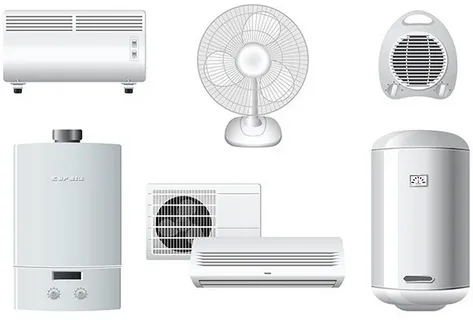As conversations about climate change and energy efficiency grow louder across the world, homeowners are becoming increasingly aware of the impact their choices have on the environment. One major decision that can significantly affect both your carbon footprint and energy bills is how you heat and cool your home.
Gas heating has traditionally been a popular option in households with cooler climates such as Melbourne Australia, but with the growing awareness about fossil fuels and the rise of green energy, more people are making the switch to electric reverse cycle air conditioning.
So, why are reverse cycle systems being hailed as an effective heating and cooling solution, and a win for the planet?
Gas Heating Depends on Fossil Fuels—Reverse Cycle Does Not
Natural gas has been marketed as a “clean” energy source in the past, but make no mistake—it’s still a fossil fuel. When gas burns, it releases carbon dioxide (CO2) into the atmosphere, contributing to climate change. On top of that, methane, a greenhouse gas that’s far more potent than CO2, often leaks during the production and distribution of natural gas.
In contrast, reverse cycle air conditioning systems run on electricity, which is increasingly generated from renewable resources like solar, wind, and hydro power. This means that when you switch to electric heating and cooling, you have the option of powering your home with renewable energy and dramatically reducing your household’s carbon footprint.
Reverse Cycle Air Conditioners Are Incredibly Energy-Efficient
Another major perk of reverse cycle systems is their efficiency. They work differently than traditional gas heaters: instead of generating heat through combustion, they move heat from one place to another. This heat transfer process can be up to 400% efficient, meaning you’ll get up to 4 times the heating energy from every unit of electricity used.
In short, reverse cycle systems provide greater warmth with less energy input, making them far greener than gas systems. And because they also cool your home in summer, they save money and energy by functioning as an all-in-one solution for year-round comfort.
Gas Resources Are Finite—Renewable Power Is the Future
Despite its historical popularity, natural gas is a finite resource. Australia is already facing domestic gas shortages, and as supplies dwindle, prices will continue to rise. This means gas heating will only grow more expensive and less sustainable in the years to come.
Meanwhile, renewable energy like solar and wind is becoming cheaper and more accessible across the country. By switching to reverse cycle air conditioning now, you’ll future-proof your home as the world increasingly moves away from gas. In fact, pairing a reverse cycle system with solar panels means you can power your heating and cooling needs with free, clean energy from the sun.
Reduce Emissions, Save Money
One of the biggest advantages of going electric is the opportunity to lower both your emissions and your household running costs. With the right reverse cycle system, you can heat your home more efficiently, cutting your energy use—and energy bills—dramatically.
For even more savings, consider signing up for a green energy plan with your electricity provider or combining your HVAC system with solar panels. This ensures that your heating and cooling is powered by renewable energy, allowing you to live more sustainably while enjoying long-term cost reductions.
A Healthier Choice for Your Family
Beyond environmental benefits, switching from gas to reverse cycle heating can improve indoor air quality and health. Gas heaters, particularly older models, can release harmful emissions such as carbon monoxide and nitrogen dioxide into the home. Poor ventilation and maintenance can make this even worse, posing risks to both children and adults.
Reverse cycle systems eliminate these risks because they don’t burn fuel to produce heat. Instead, they provide clean, safe, and reliable heating that’s better for your family’s health and better for the environment.
Supporting Climate Goals
As the urgency to address climate change intensifies, government and industry leaders are emphasizing the importance of reducing dependence on fossil fuels. With initiatives like net-zero emissions targets and investments in renewable energy, it’s clear that the future of heating and cooling is electric.
By choosing an electric reverse cycle air conditioner over gas heating, you’re actively contributing to the broader climate goals shared worldwide. Every household that moves away from gas helps to strengthen the push toward renewable energy adoption and a more sustainable future.
The Bottom Line: Why Wait?
Switching from gas heating to reverse cycle air conditioning isn’t just an upgrade for your home—it’s an upgrade for the planet. By making the switch, you’ll immediately benefit from superior energy efficiency and long-term cost savings, while significantly reducing your household’s carbon emissions.
As Australia moves toward a cleaner energy future, every small step toward sustainability counts. By using electric heating and cooling powered by renewable energy, you can contribute to positive environmental change while enjoying a more comfortable, cost-efficient home.
Are you ready to future-proof your home and do your part for the planet? Contact a trusted HVAC expert today to learn more and start your journey toward a sustainable, gas-free future.

